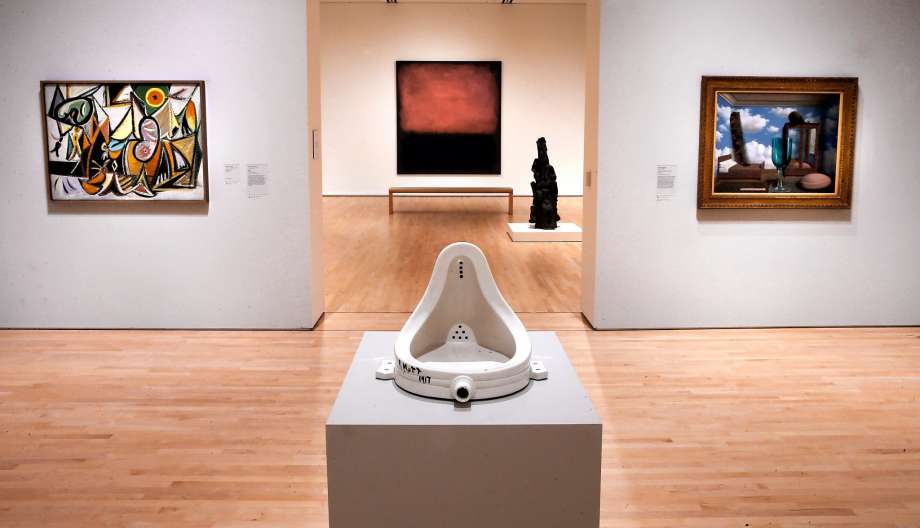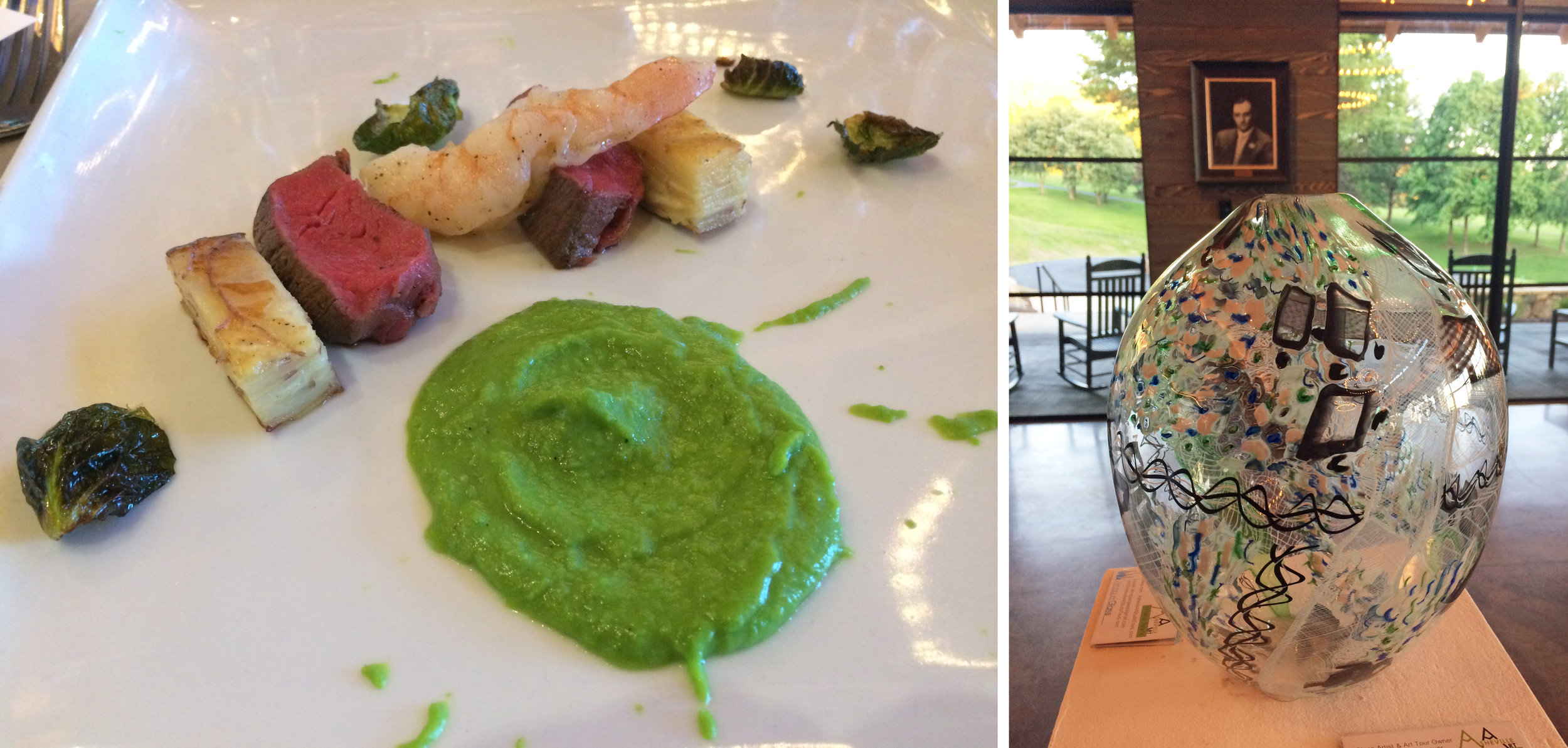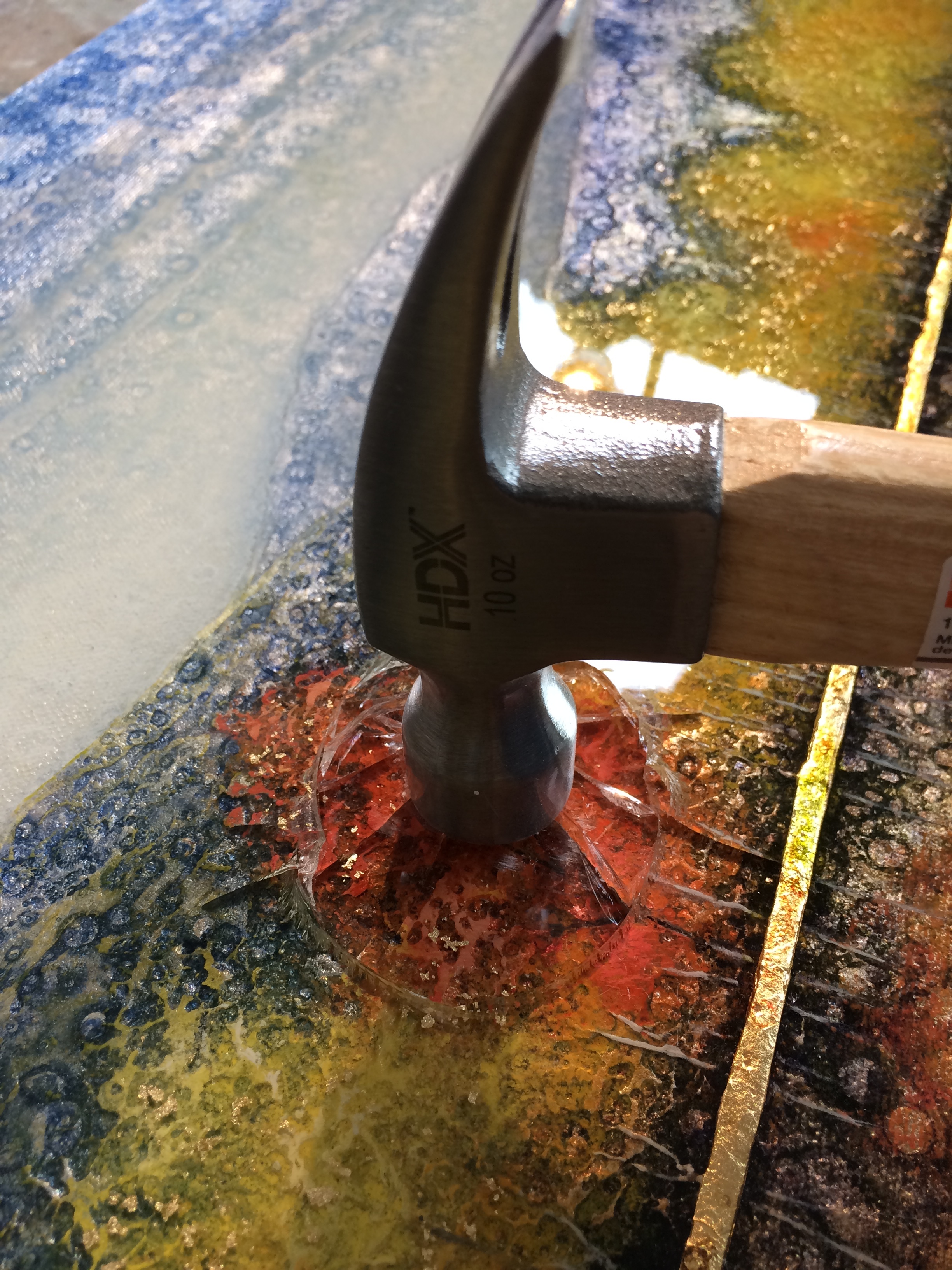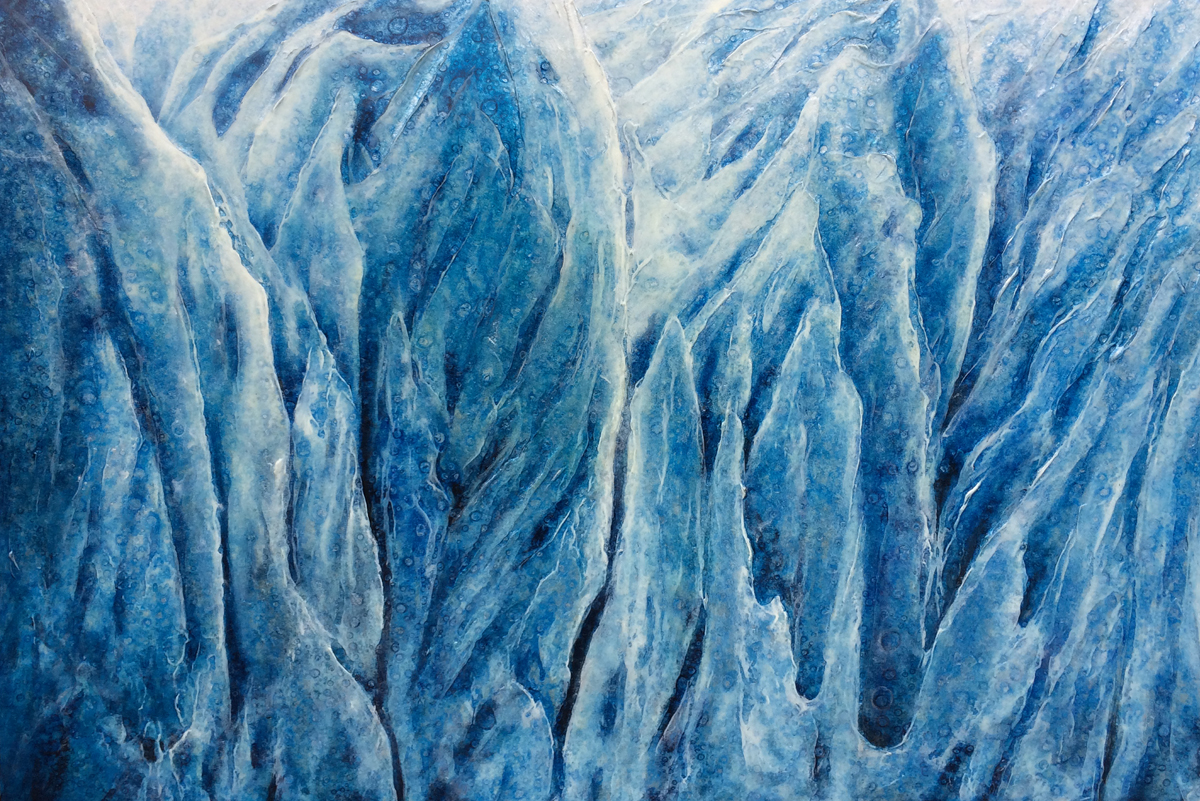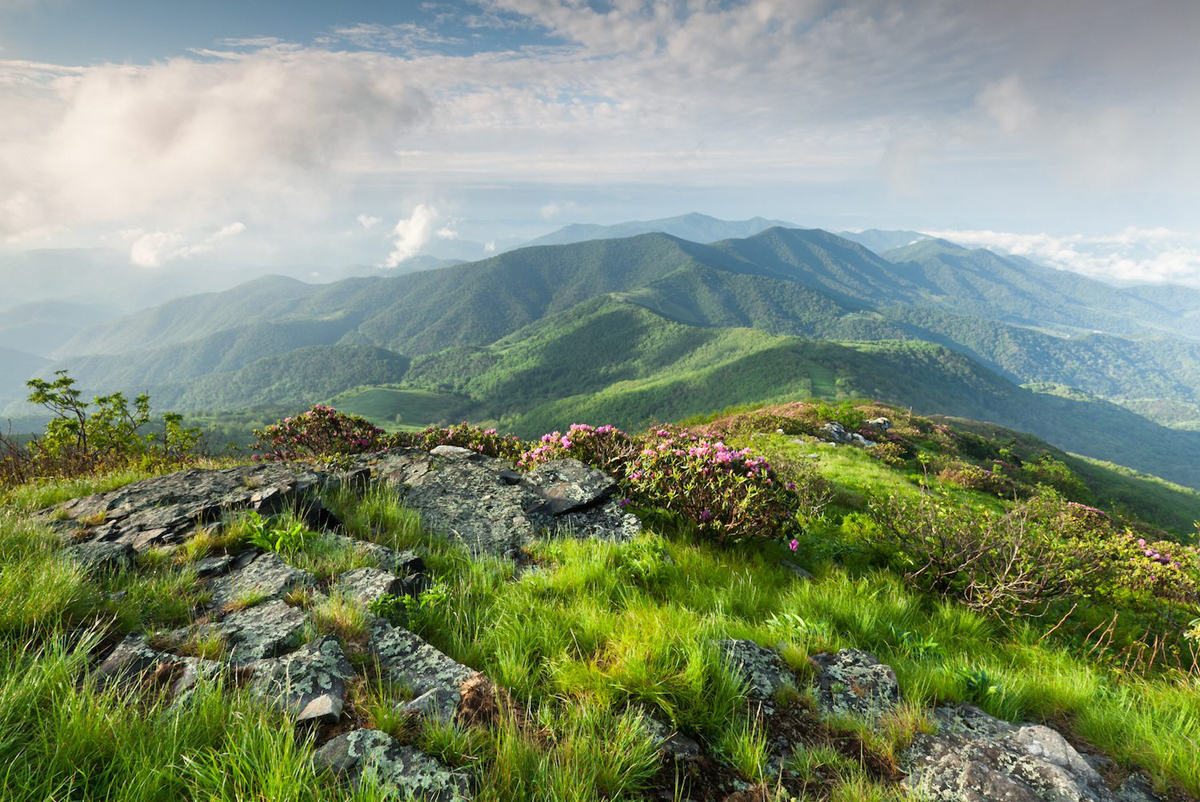I'm an oil painter in Asheville, North Carolina and I love living here. It's a unique little city. Asheville is an odd little cultural "melting pot". It attracts bohemians, artists, hippies, and hikers. To a great extent, we're a cool version of "the Island of Misfit Toys". Asheville is a southern American town with a handful of "locals" who were born here, and the rest of the population are transplants from all over the country. The vibe of the town, the beauty of the surroundings, the art, music (and craft beer) scene -- this is what draws people here (it's not the job opportunities!). This makes Asheville a really interesting place to live, because you live your life amongst people who all have different views on things political, social and spiritual but (for the most part) respect the right of their neighbors to hold their own views. In fact, the only thing people here seem not to tolerate is intolerance. That sentiment leads us right into our next (and last) world view: Post Modernism.
To be accurate, a post-modernist would say that post modernism is NOT in fact a world view, but an “anti-world view". They would say that no single narrative is able to make sense of all our little cultural stories. In other words, "worldviews" are now out of fashion (which in itself is a world view).
Per this world view, there is absolutely no absolute truth.
Because our world views create the sense of how we interpret life here on this planet, how we make sense of everything we experience, a post modernist would assert we all create our own reality, and that it's pointless to try to convince anyone else that your particular "take" on things is the correct "take" on things. Post modernism would insist that there is no authoritative "take" on anything.
Per this world view, there is absolutely no absolute truth. Yes, I wrote that sentence that way intentionally, because it points out to me the weakness of this world view. To say there is no absolute truth is in itself an absolute truth claim, so when I say "there is NO absolute truth", I'm contradicting the very assertion I'm making. But because of the abuses of power by all who have held the previous world views discussed (see earlier blog posts), post modernists distrust of all authority and dogmatism. And if you listen to people speaking around you (from the news on TV to social media), you'll notice that the phrase "I believe this is right or true" has been replaced by "I feel this is right or true". I.e. post modernism appeals to our "gut" rather than reason and logic based on an accepted set of principles we regard as absolute truth.
Because of this, tolerance, freedom of expression, inclusion, and refusal to claim to have all the answers are the only universal values. And honestly, that sounds really good but...but it's a world view of contradictions.
Consider the following conversation between two friends:
Sam: "I don't think you should do it. It's not right.
Tom: "I think I should have the right to do whatever I want to do."
Sam: "I just don't think it's right."
Tom: "You're just pushing your morality on me. It's YOUR morality. Not mine. You're just judging me. Who are you to tell me I'm wrong?"
Sam: "Wait, so you think judging people is wrong?"
Tom: "Of course judging people is wrong. Everyone knows that."
Sam: "So you think I'm doing something wrong when I'm judging people?"
Tom: "Yes, of course you're wrong when you judge people."
Sam: "But you're judging me. I think I should have the right to do whatever I want to do. What if I want to judge? Who are you to tell me I'm wrong?"
Logic like that is really hard to debate. So I personally find post modernism really frustrating and most difficult to scrutinize, but it is an absolute truth (pun intended) that this world view has very deeply affected twenty first century culture.
And so, we've reached the end of our very over-simplified discussion of world views. Theism, Deism, Naturalism, Nihilism, Existentialism, Modernism, New-Age Pantheism and Post Modernism...these are the world views that have shaped the western civilization since time immemorial. And because of that fact, they have drastically affected the art produced by our culture.
So in light of all we've discussed, how do we use our knowledge of world views to understand art? I would suggest it boils down to asking two questions when we are exposed to artwork (painting, photography, ceramics, poetry, music):
1) What world view is it speaking from and to? The answer to that question has a whole lot to do with what is the artist is probably saying.
2) So in light of the answer to the first question...is there a message in the art and if so, what is it?
“BUT IS IT GOOD ART?”
I think that's a fair question to ask and a rather simple question to answer. Once we have at least some idea of what the artist is saying, I would consider one more point: What level of skill is involved in the execution of the art being considered? I mean, do you look at the piece of art with any degree of wonder? (i.e. “Wow, how’d he or she do that?”)
That’s it. You don’t have to be sophisticated to figure it out. When my kids were little, we took them to a modern art museum. For the record, I wouldn't suggest this outing for most kids, but it was pretty hysterical. Everyone there looked like they were quietly viewing the artwork (one was a blob of red paint in the middle of an 8' square white canvas) with wrapped fascination. To me, it was so interesting just to watch the people. It really felt like a modern retelling of the story of the Emperor's New Clothes and I felt like the little kid that was laughing at the emperor because he was in fact naked (though everyone was acting like they saw such astute wisdom in the king's choice of royal finery). Everyone else in the museum was acting like they saw such wisdom and depth in the artwork on display. Into that scene, my kids come racing around the corner and shout (so embarrassing), "Mom! Dad! You gotta see the stuff in this room over here! It's even weirder than the stuff in this room!" There were gasps from the museum crowd. Truth hurts.
What level of skill is involved in the execution of the art being considered?
There's a true story about an art auction in New York some years ago. There was an abstract painting auctioned off for millions of dollars. It was prized for its frenetic energy and non-traditional use of color. It was later found out that it was painted by a gorilla. The interesting thing is that everyone was completely insulted to find this out and the buyers demanded their money back. This is fascinating. Was it good art or not? Everyone thought it was great before they found out it was painted by an ape. Again -- think "Emperor's New Clothes".
Look, bottom line is: If it’s good art, you can probably tell.
Since I'm obviously giving my opinion at this point in my blog series, let me go one step farther:
I don't believe that everything called art is art. There. I said it.
- Just because it’s shocking doesn’t make it art. It may well be a visual expression. But unless there is skill involved, it is not art.
- Just because it is clearly conveying a message doesn’t mean it’s art if it is not skillfully pulled off.
- Just because no one else has thought of doing it doesn’t mean it’s art.
For what it's worth, I think good art says something TO the viewer (which is why we need to interpret the art in lieu of the artist's world view) or that art does something IN the viewer...and is skillfully done.
That’s it.



